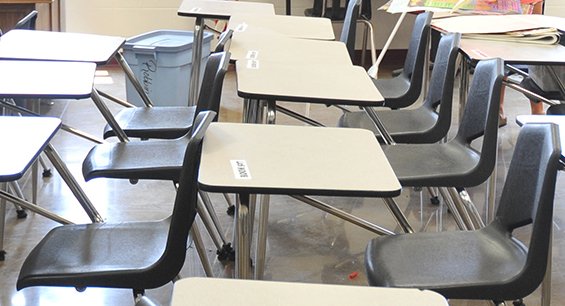LITTLE ROCK -- The School Board for the Pulaski County Special School District voted 6-0 Tuesday to commit to the construction of 10 classrooms, a 2,200-seat arena, a sports field and an improved ROTC building at Mills University Studies High School.
The draft plan for Mills -- formulated in response to a federal court order -- will now be submitted to Chief U.S. District Judge D. Price Marshall Jr. by the Aug. 1 deadline set by the judge. If the judge approves the proposal, the district will proceed with engaging architects to develop a design for the additions.
"I want to thank the board for acting on Mills University Studies High," Superintendent Charles McNulty said after the vote. "I feel like we got closer to justice tonight."
The judge in a May 6 order in a long-running federal school desegregation lawsuit called for the Pulaski County Special district to propose to him a plan to "square up" inequities between the Mills' campus, which is in a more heavily Black residential section of the district, and Robinson Middle School, which is in a more affluent, predominantly white residential area.
The two schools were built at the same time and opened to students in August 2018.
Marshall said in May that both buildings are "excellent facilities," but he called Robinson "superior."
"[I]f Mills High gets an A, Robinson Middle gets an A++," the judge wrote.
The four-part plan for Mills includes:
• 10 new high-technology classrooms giving the 700-capacity schools an increased capacity of 850.
• A 2,200-seat arena that could host tournaments for schools in classifications of up to 5A.
• A softball field.
• Improvements to the existing Reserve Officers Training Corps building, which is a cement-block building separate from the main Mills building and predates the construction of the main building.
In a related move Tuesday, the board also voted unanimously to submit an application to the Arkansas Board of Education to issue second-lien bonds to raise $15,375,000, which will be a backup to other funding plans being developed for Mills and other district projects.
The issue of second-lien bonds as a way to raise money does not require approval of voters at an election. The district would repay the bond debt over time with funds from tax collections not already obligated for other expenses.
McNulty has said the second-lien bond issue is meant to assure the judge that the district has resources to expand Mills High.
He suggested that the district may be able to use federal covid-19 relief funds -- American Rescue Plan money -- to help pay for Mills' classrooms. That would allow the district to create better social distancing among students and staffers to possibly lessen the spread of covid-19.
Additionally, district leaders are exploring ways to restructure annual bonded debt to generate capital construction funds that could be applied to the Mills addition. That plan is expected to be presented to the board in August, the superintendent said.
The district, with guidance from financial adviser Jack Truemper of Stephens Inc., had already this year initiated steps to refinance at a lower interest rate a 2017 bond issue. That could generate $7 million to $8 million in savings in debt payments. The district, however, held off on the refinancing when interest rates increased in March. Higher interest rates would have produced smaller savings to the district.
The interest rates have since gone down and then up again in just the past week, Truemper said. The board Tuesday directed Truemper to proceed with the refinancing knowing that if the savings to be generated are unsatisfactory, the deal can be canceled.
Board member Alicia Gillen questioned whether the funding for Mills would preclude spending at other campuses -- such as College Station Elementary -- that have urgent facility needs.
Truemper said the district can anticipate increased revenue over time as property values increase.
McNulty said the district's financial plan will allow for meeting facility needs.
In response to questions from board member Stephen Delaney, Curtis Johnson -- the district's executive director of operations -- said it will take 36 months from design to completion of the Mills plan, barring any delays with acquiring supplies.
"I love the whole plan," board member Shelby Thomas said.
In his order, Marshall did not require specific projects or the spending of a minimum or maximum amount of money at Mills.
The judge did direct the district to consult with the McClendon intervenors, who represent the class of all Black students in the district and who last year challenged the district's assurances that it had met its desegregation obligations in regard to equal facilities.
As to the four components of the proposal, district leaders told the board that "if the plan is too minimal, the intervenors may attack it and/or the court may reject it. If the plan is too ambitious, it runs the risk of being too big to fund."
Mills, at 1205 E. Dixon Road, was built to help meet the district's obligation to equalize the condition of its school buildings.
To that end, the district pledged to spend $55 million to build a new Mills High campus and convert what was Mills High into Mills Middle School, replacing the old Fuller Middle that was demolished.
But then Robinson Middle School, at 21201 Cantrell Road, was rebuilt, and the plans for Mills High were squeezed, Marshall said in his May 6 order.
"For example, classroom size was reduced to the state minimum. Hallways shrunk in width and three feet in height. Overall capacity was reduced from 750 students to 700," said Marshall, who has toured the Mills High and Middle campuses, as well as Robinson Middle.

